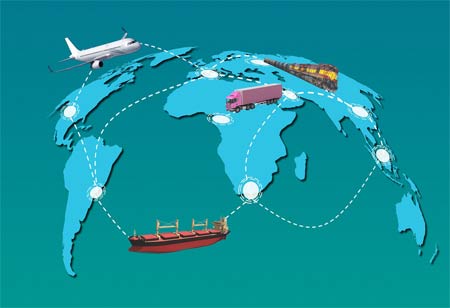THANK YOU FOR SUBSCRIBING
THANK YOU FOR SUBSCRIBING

By
Logistics Transportation Review | Friday, June 02, 2023
Stay ahead of the industry with exclusive feature stories on the top companies, expert insights and the latest news delivered straight to your inbox. Subscribe today.
Ocean carriers must innovate swiftly to sustain as the ocean freight market is expected to change with technological implementations.
FREMONT, CA: The supply chain management tools and technology are constantly evolving, which impacts ocean freight prices and is undergoing a significant transition in the ocean freight sector. Major factors altering this industry are the rise in e-commerce demand, the expansion of individual shippers' businesses, and the growing rivalry in ocean freight shipping.
A growing interest in e-commerce
According to Gartner, the global e-commerce market will expand at a compound annual rate of 12 percent. This will result in an increase in online orders for all products, even those typically delivered by truck or air. Nearly 48 percent of merchants globally anticipate a rise in online sales over the three years from 2023.
Over 90 percent of global trade is handled over the ocean, making the ocean freight transportation sector the backbone. Far fewer ships are available for transport today than ten years ago due to the high overcapacity and the rise in popularity of new technologies like autonomous vehicles (AVs) on land.
Enhanced efficiency as a result of digitization
Efficiency and earnings for ocean carriers are anticipated to rise in 2023 due to developments in automation and digitization and a recent upsurge in global trade.
Automation has significantly changed the ocean freight sector during the last ten years. Artificial intelligence (AI) and machine learning, two emerging technologies, assist ships in navigating more quickly, precisely, and effectively. This will save fuel expenses for carriers while also enhancing their overall performance.
Another significant factor that will affect ocean carriers in 2023 is digitization. Digitization will automate and digitize every part of an operation, including cargo handling procedures such as the loading and unloading of cargo from ships onto trucks or railways. Eliminating manual, labor-intensive, repetitive procedures lowers labor costs while increasing process visibility thanks to real-time monitoring devices installed across shipping facilities.
The creation of novel technologies
Carriers will need to quickly adopt new technologies, develop cutting-edge operational methods, and offer more value to their customers if they want to succeed over the next five years.
To do this, they must take the initiative, lead with their technical expertise, and accept emerging technology. Blockchain, for instance, has been hailed as a key tool for supply chain management transparency. Still, it also opens up possibilities for new ways of collaborating with clients that desire safe data transfer across other industries.
Carriers can also increase performance by being innovative in their product development. They could forecast future demand using information from previous shipments and offer better delivery options based on what is required at each stop along the way (such as temperature-sensitive goods), which would help lower risk during transportation and boost overall efficiency - ultimately putting more money back in your pocket sooner rather than later!
Global market growth
The main drivers of the expansion are the demand for lower transportation costs and bunker rates, as well as increased usage of digital technology like the Global Positioning System (GPS), which enables container ships to navigate the world's oceans efficiently.
A decrease in bunker costs
Due to the growing need for cheaper shipping, shipments that previously took the truck or rail will be transported by watercraft instead. Costs associated with shipping have also decreased due to the lower bunker prices.
Ocean freight shipments that were formerly transported by truck or rail will now be transported by watercraft as the need for cheaper shipping prices grows. Costs associated with shipping have also decreased due to the lower bunker prices.
As more businesses start adopting ocean freight to get their goods from point A to point B at a lower cost than ever before, the market at present suggests that this trend will carry on beyond 2023.
Greater exposure
As digital technologies streamline operations and improve connectivity between port operators, shipping companies, and cargo owners, container ships will become more efficient. Increased visibility into shipment status and scheduling will result from this.
Container ships and container shipping rates will become more cost-effective as port managers, shipping companies, and cargo owners are connected better thanks to digital technology that optimizes operations. Increased visibility into shipment status and scheduling will result from this.
This is the outcome of incorporating modern technology, enabling improved stakeholder coordination, including ports, carriers, and shippers. For instance, using the same database for all parties engaged in an ocean freight transaction makes communication easier.
I agree We use cookies on this website to enhance your user experience. By clicking any link on this page you are giving your consent for us to set cookies. More info





